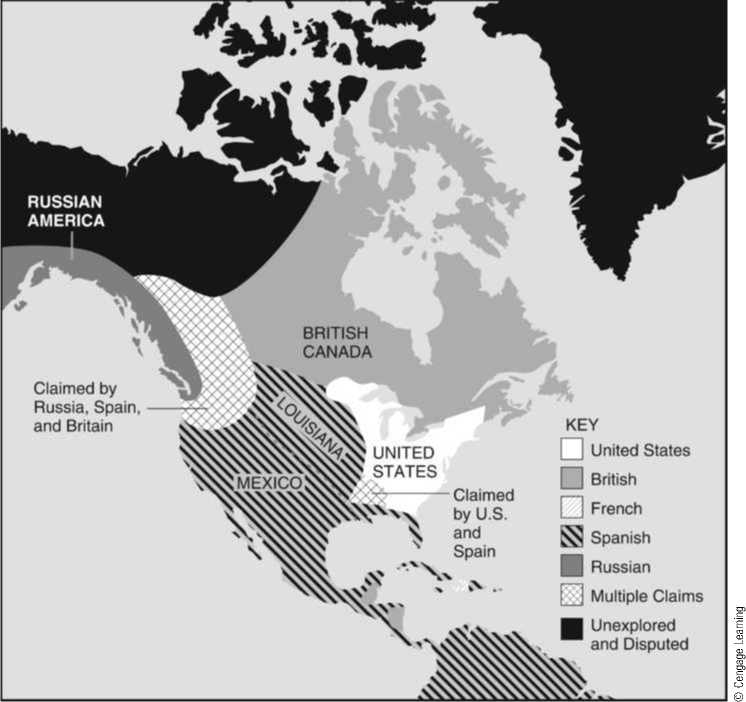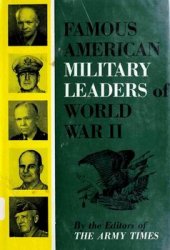The rivalry of European empires persisted for a long time, and the growth in population and the colonization of new territory were not restricted to the eastern coast of North America (see Map 2.3). During the sixteenth century, Spain had occupied northern Mexico and Florida, and while English settlement was taking place, the Spanish were moving northward into Texas, southern Arizona, and southern California. As we have already mentioned, in the seventeenth century, France established bases in the Lesser Antilles and in Canada; from Canada, French explorers and traders pushed into the Mississippi Valley and on to the Gulf of Mexico. The three rival states were bound to clash in America, even if they had not been enemies in other parts of the world. To the general historian we must leave the descriptions of these bitter rivalries and of the resulting complex, if small-scale, wars. Following intermittent conflict between the French and the English in the Northeast and along most of the western frontier, the French and Indian War resulted in the temporary downfall of the French in North America. By the treaty of Paris in 1763, only Spain and England were left in possession of the North American continent. Spain took all the territory west of the Mississippi, and England secured everything to the east, with the exception of certain fishing rights and small islands retained by the French off Newfoundland. According to this agreement, England acquired all of Florida, thereby settling perennial disputes with Spain that had long disturbed the colonies of South Carolina and Georgia. It is difficult to remember that Spain, not France, harassed the pioneers who moved out of the original 13 colonies and into the southern interior. Not until 1800 did France again own the Territory of Louisiana and its vital port of New Orleans, and that control did not last long.
MAP 2.3
Territorial Claims
Territorial possessions and claims in North and Central America toward the end of the eighteenth century.

Two institutional arrangements particularly favored British dominance in North America. First was the open labor market of indentured servitude, used by the British but not by the Spanish or French, to facilitate migration. Of the 500,000 British immigrants (1610-1775), 350,000 came as indentured servants. Second was the establishment of permanent British settlements, which fostered privately owned farms and families and, ultimately, towns. largely to these two market-based, government-supported institutions, British settlers in North America outnumbered the French nearly 20 to 1 by 1750. High levels of English migration, encouraged by wide-ranging economic opportunities, forged the beginnings of an American identity cloaked in English language, customs, and common law (rather than the French civil law).11
SELECTED REFERENCES AND SUGGESTED READINGS
Graven, Philip. “Family Structure in Seventeenth Century Andover, Massachusetts.” William and Mary Quarterly (April 1966): 234-256.
Grubb, Farley. “Colonial Labor Markets and the Length of Indenture: Further Evidence.” Explorations in Economic History 24 (1987): 101-106.
_. “The End of European Immigrant Servitude in
Andrews, Charles M. The Colonial Period of American History. New Haven, Conn.: Yale University Press, 1934.
Barrington, Linda, ed. The Other Side of the Frontier. Boulder, Co.: Westview, 1999.
Bradford, William. Of Plymouth Plantation. New York: Capricorn Books, 1962.
Denevan, William, ed. The Native Population of the Americans in 1492, 2nd ed. Madison: University of Wisconsin Press, 1992.
Earle, Carville. The Evolution of a Tidewater Settlement System: All Hallow’s Parish, 1650-1783. Chicago: University of Chicago Press, 1975.
Engerman, Stanley L., and Kenneth L. Sokoloff. “Factor Endowments, Institutions, and Differential Paths of Growth Among New World Economics: A View From Economic Historians of the United States.” In How Did Latin America Fall Behind? ed. Stephen Haber. Palo Alto, Calif.: Stanford University Press, 1996.
Fogel, Robert, and Stanley Engerman. Chapter 1 in Time on the Cross: The Economics of American Negro Slavery. Boston: Little, Brown, 1974.
Franklin, Benjamin. “Observations Concerning the Increase of Mankind.” Philadelphia, 1751. In The Papers of Ben Franklin, ed. Leonard Laberee. New Haven, Conn.: Yale University Press, 1961.
Galenson, David W. “Immigration and the Colonial Labor System: An Analysis of the Length of Indenture.” Explorations in Economic History 14 (1977): 361-377.
______. “British Servants and the Colonial Indenture
System in the Eighteenth Century.” Journal of Southern History 44 (1978): 41-66.
______. “The Market Evaluation of Human Capital:
The Case of Indentured Servitude.” Journal of Political Economy 89 (1981): 446-467.
____. White Servitude in Colonial America. Cambridge: Cambridge University Press, 1981.
____. “The Rise and Fall of Indentured Servitude in the Americas: An Economic Analysis.” Journal of Economic History 44 (1984): 1-26.
The United States: An Economic Analysis of Market Collapse 1772-1835.” Journal of Economic History 54 (1994): 794-824.
Grubb, Farley, and Tony Stitt. “The Liverpool Emigrant Servant Trade and the Transition to Slave Labor in the Chesapeake, 1697-1707: Market Adjustments to War.” Explorations in Economic History 31 (1994): 376-405.
Hanes, Christopher. “Turnover Cost and the Distribution of Slave Labor in Anglo-America.” Journal of Economic History 56 (1966): 307-329.
Heavener, Robert. “Indentured Servitude: The Philadelphia Market, 1771-1773.” Journal of Economic History 38 (1978): 701-713.
Mann, Charles. “1491.” The Atlantic Monthly 289, no. 3 (March 2002): 41-53.
McCusker, John J., and Russell Menard. The Economy of British America 1607-1789. Chapel Hill: University of North Carolina Press, 1985.
Potter, Jim. “The Growth of Population in America, 1700-1860.” In Population in History: Essays in Historical Demography eds. D. V. Glass and B. E. C. Eaversley. Chicago: Aldine, 1960.
Roback, Jennifer. “Exchange Sovereignty, and Indian-Anglo Relations.” In Property Rights and Indian Economies: The Political Economy Forum, ed. Terry Anderson. Lanham, Md.: Rowman & Littlefield, 1992.
Rosenblot, Angel. La Poblacion Indigena yel Mestizaje en America. Buenos Aires, Argentina: Nova, 1954.
Salisbury, Neal. “The History of Native Americans from Before the Arrival of the Europeans and Africans Until the American Civil War.” In The Cambridge Economic History of the United States, Vol. I, eds. Stanley L. Engerman and Robert E. Gallman, 1-52. Cambridge: Cambridge University Press, 1996.
Wood, Peter. “The Changing Population of the Colonial South: An Overview by Race and Region, 1685-1760.” In Powhatan’s Mantle: Indians in the Colonial Southeast, eds. Peter Wood, Gregory A. Waselkov, and Tomas M. Hartley. Lincoln: University of Nebraska Press, 1989.




 World History
World History









